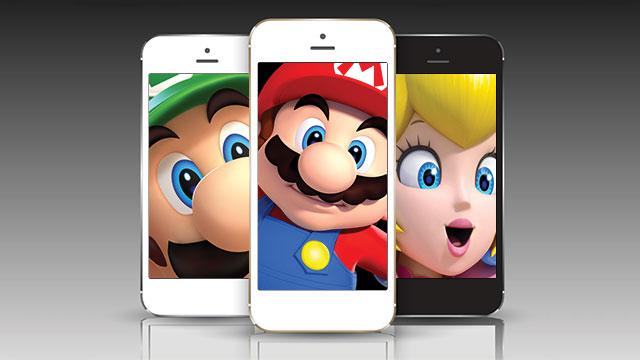
05 Nov WE CAN LEARN A LOT FROM NINTENDO’S SMARTPHONE FAILURES
Welcome to Worldwide Wednesday.
Smartphones have reached more people, quicker than any other piece of technology in history, with estimated users to total 1.75 billion by the end of 2014.
Mobile is the new digital frontier, offering a way to reach a greater audience and create a personalized relationship with them. A mobile strategy is a must for any business looking to succeed in today’s digital world. So why are so many companies failing to see the light? As phones become cheaper to produce and 3G and 4G slowly penetrate the most rural areas of developing countries, forecast reports expect smartphone adoption to increase by 1 billion by 2017.
Knowing this, many companies have had to pivot in order to reach and satisfy customers. Take Facebook, a company that underestimated the impact of smartphones and native apps in 2012 “Our biggest mistake was betting too much on HTML5”. They quickly rectified that mistake, and today the social giant is thriving on mobile. But for every company that sees the light there is one that fails to accept that change is happening. Failing to accept the realities dictated by the modern consumer, and clinging to past glories has seen once thriving companies like Blockbuster and Polaroid disappear.
Those who move slowly or refuse to change get left behind
This brings me to Nintendo. Things aren’t looking great for the Japanese company, who reported operating losses of 46.4 billion yen ($457 million), for the fiscal year ending in March. Yet CEO Satoru Iwata still ruled out releasing existing games on other platforms, believing the company is still able to be successful and “show its strength as an integrated hardware-software business” A once great brand seems to be fighting the realities of smartphones, tablets and the modern consumer; handheld gaming is ruled by the smartphone and Nintendo, in my opinion, can’t compete with the PlayStation and Xbox. They are failing to capitalize on their greatest strength – Their games.
I grew up with Nintendo classics like Golden Eye and Mario Kart. I love the brand and would happily jump at the opportunity to play these games on my iPhone and iPad, but would never purchase their hardware and this makes Nintendo’s mobile strategy very frustrating. Nintendo recognizes that smart devices are likely to provide a better experience for certain features unrelated to games, so smart devices will be used to “attract consumer attention and communicate the appeal of our platform.”
Maybe I’m missing something, but I’m failing to see how Nintendo will use smart devices to “make connections with customers,” without the games. For most of us, the games are what made us fall in love with Nintendo.
The games are what made us fall in love with Nintendo
EA Games, have enjoyed success and found a new audience by releasing fan favorites like GTA and Need for Speed on the iPad, why won’t Nintendo do the same? Why can’t they see the gaming industry has changed?
There’s a lot we can learn from Nintendo’s unwillingness to innovate. Customers are loyal to the brands they love, but only to a certain extent. Nintendo’s unwillingness to let me be 007 on my iPad is slowly making me resent them.
Don’t make the same mistake as Nintendo and assume your customers will follow you blindly, think about ways you can better service them and give them what they need. You only need to look at the travel, publishing, health care, video, manufacturing and education industries (to name a just a few) to know that failure to innovate can lead to sad ending for once great companies.
- WHAT THE CEO IS READING – IMPROVING THE BUSINESS-TO-BUSINESS CUSTOMER EXPERIENCE - March 26, 2016
- WHAT THE CEO IS READING – LEADING AND GOVERNING THE CUSTOMER-CENTRIC ORGANIZATION - March 22, 2016
- Spreading The Love In The Office For Valentines Day - March 2, 2016
- WHAT THE CEO IS READING – MANAGE YOUR EMOTIONAL CULTURE - February 23, 2016
- WHAT THE CEO IS READING – GETTING TO SI, JA, OUI, HAI, AND DA - December 9, 2015
- Aware presents at the “Creativity Connect Forum” - December 1, 2015
- Aware’s Annual Community Care Event 2015 - November 24, 2015
- Aware Will Be Presenting at the International Creativity Forum, ‘Creativity Connect’ - October 28, 2015
- Aware Wins Esri & ICMA Social Services App Challenge with ‘The Raccoon Challenge’ - October 5, 2015
- 2 นาทีข่าวเทคโนโลยีประจำเดือนกันยายน - October 2, 2015
